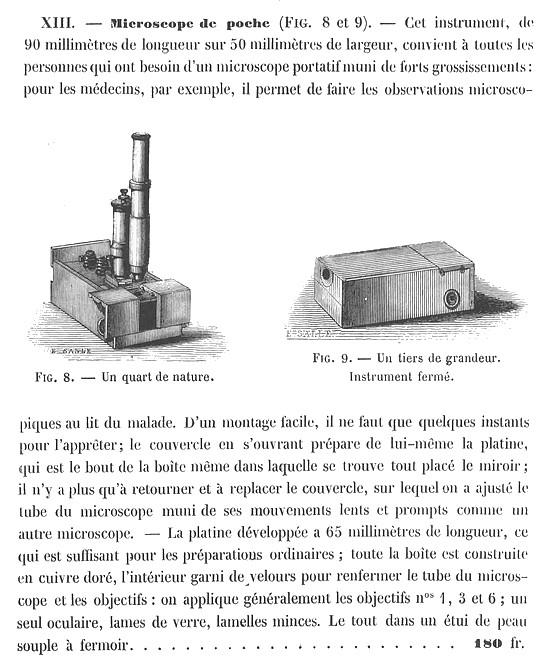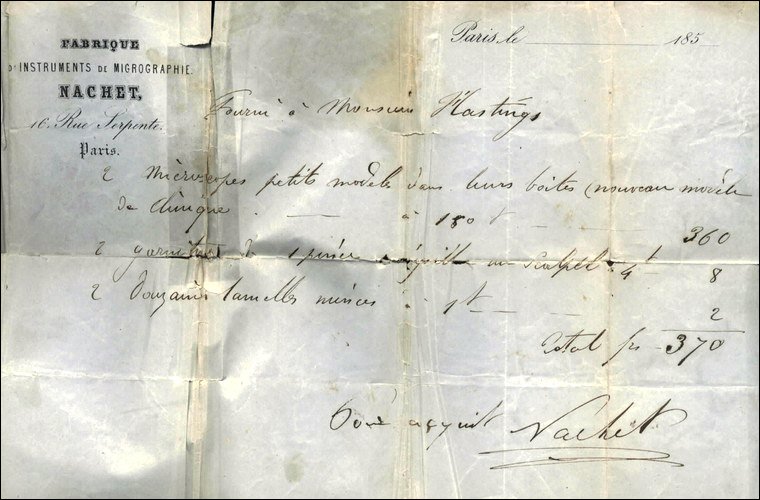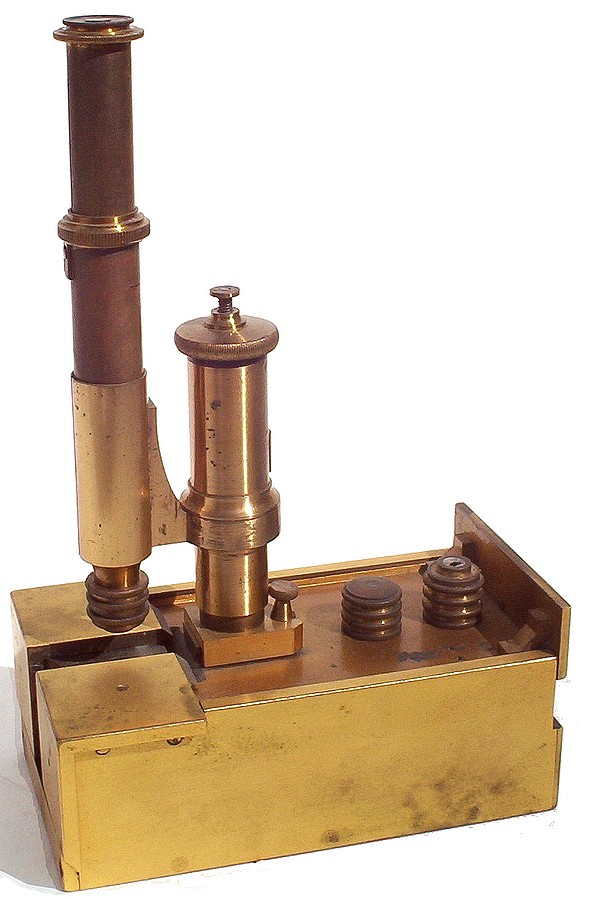
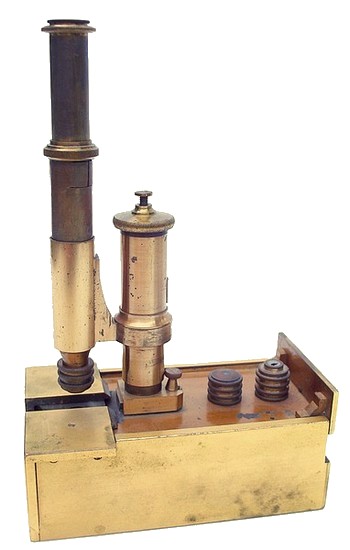
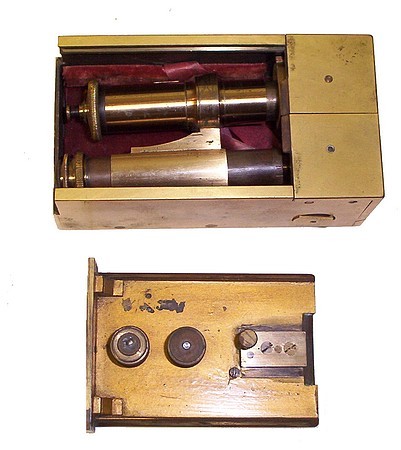
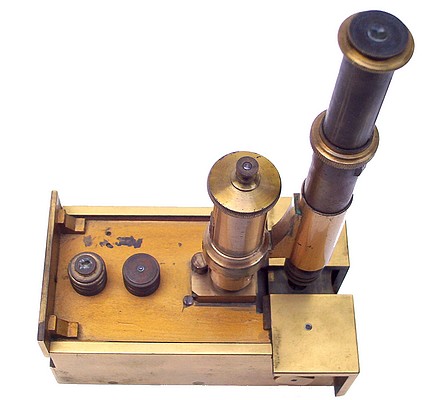
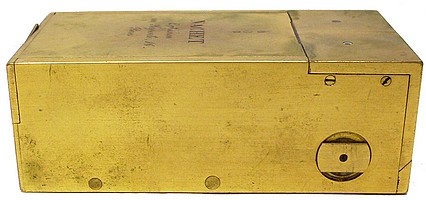
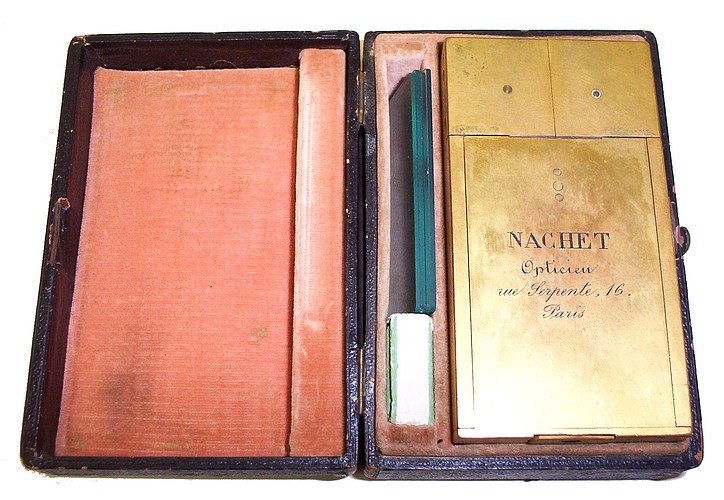
In his 1859 book, Das Mikroskop Pieter Harting (1812-1885), professor of pharmacy, zoology and anatomy at the Utrecht University from 1843 until 1882, wrote extensively about the Nachet pocket microscope as follows:
Finally I write about a pocket-microscope that is very useful especially on journeys, because it may be stored in a gilt brass case of 9 cm length and 5 cm width. The small instrument, shown in Fig. 293, is a cute miniature-microscope, which can be used for most examinations as well as they may he done with an instrument of normal size. The tube has just a length of 7 cm, if the inner tube is pulled down, and 10 cm with it being extended; the diameter is just 14 mm. If the cover, on which the objectives are stored on its inner side, is removed, the front part of the case brakes down into two pieces, this way two holes can be seen, one in the front for the concave-mirror of just 14 mm diameter, which is making a completely sufficient lighting possible due to its short focus-length, and one on top to get the light to the table. The latter (table) is actually nothing else but the front part of the case itself. For fine-focus there is a micrometer-screw, which is installed in the back of the stage the same way as with his (Nachet's) bigger microscopes. Nachet gives with this microscope one eyepiece and the three objectives No. 1, 3 and 6. After the objective there is a weak achromatic lens and the upper part of the eyepiece is made as a achromatic double-lens, too. These modifications of the optical equipment were necessary due to the strong shortening of the microscope-tube. Regardless the small diameter of the two glasses of the eyepiece, the diameter of the range of vision is not smaller than the one that you find at weak eyepieces of bigger microscopes. For a visual range of 25 cm it (diam. range of vision) is 11 cm. - This pocket-microscope is sold by Nachet for around 160 Francs. (I thank Timo Mappes for this translation from the original German)
